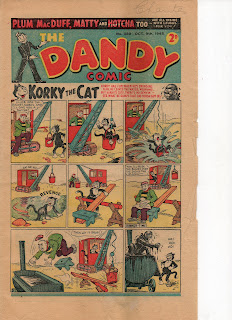Sullivant lived from 1854 to 1926. An American, he was born in Columbus, Ohio. Some of his work would appear in the American satirical magazine, Puck, an equivalent of the British 'Punch' magazine. He was greatly influenced by AB Frost, a contemporary of his who worked in a similar style of using exaggerated forms. (I'll look at Frost in a future post, as his work is every bit as fine as Sullivant's). Like Frost, Sullivant was a master of pen and ink illustrations, using delicate cross hatching to render his figures and backgrounds.
Where Sullivant excelled was in his caricatures of animals. He was one of the first to really create a modern anthropomorphic look to his creatures - particularly his use of more rounded forms which would be emulated by animators at the Disney studio in particular in the 1920's and 1930's and later on by comic strip artists from Walt Kelly to Bill Watterson.
There's also a real attention to detail - despite the simplification of forms that Sullivant uses, the anatomy is still spot on. He also added a dynamism to his animals - compare this to a Tenniel from the 1870's which while competent seems staid and a little old fashioned (that isn't to degrade Tenniel - he too was a talented illustrator, just in a different way - I'll have a review of his work in a few weeks). He also seemed to pay close attention to movement, his animal characters seem animated - flowing with life and energy.
From Alice In Wonderland
His human caricatures were also well observed, although perhaps some of the stereotypes are a little crude compared to today's more liberal minds.
Sullivant's work had a significant impact on many in the early American animation industry as well as on a number of comic artists, which makes his work all the more important to scholars of animation and comics history.
Until recently it was next to impossible to find any meaningful information on Sullivant, but through the dedication of a number of enthusiasts, a number of good articles have been written and many of his drawings have been reproduced on the web for future generations to enjoy. They're certainly going into my morgue file.
Biblography and further reading
http://animationresources.org/?p=718 - Good all round introduction to Sullivant's work with a number of links to blogs highlighting more of Sullivant's life.
http://andreasdeja.blogspot.co.uk/2011/06/t-s-sullivant.html - Andreas Deja, an animator, who admits he's nuts about Sullivant and has posted a number of wonderful images, a few of which, I swiped for this article (sorry).
http://en.wikipedia.org/wiki/T._S._Sullivant - Biography of Sullivant's life and some images.
Next along - Back to blighty - it's not 'Im.... but it is.... Ken Reid.
See you next week chums.















